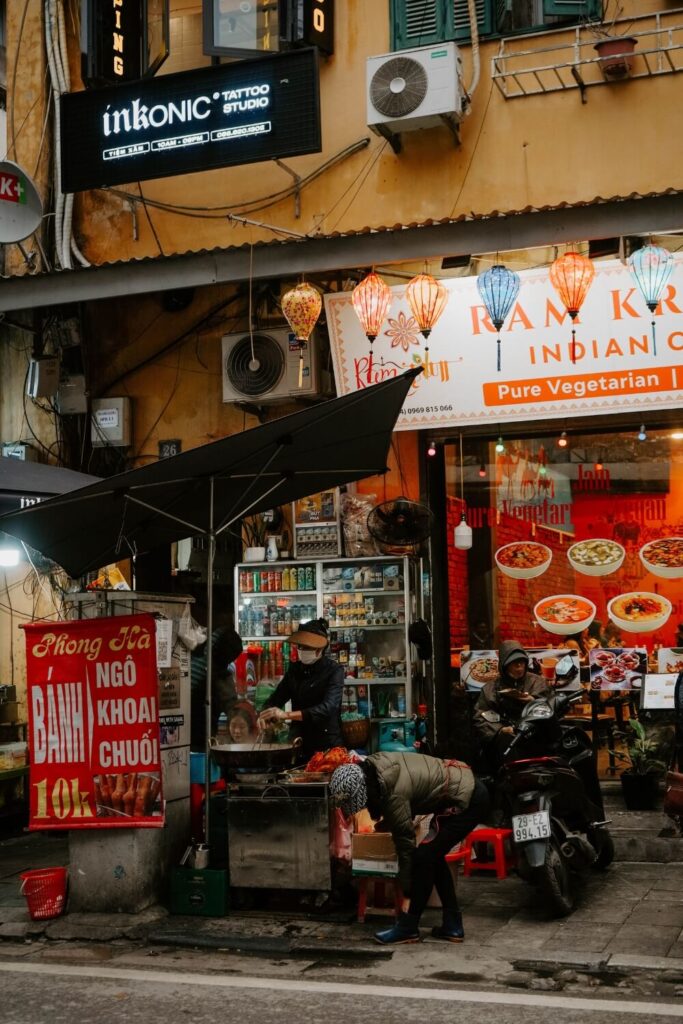Not sure how and where to begin exploring the northern parts of Vietnam? You’re in luck, as this guide covers some of the best places to visit in Northern Vietnam for mix of vibrant cities and mountain scenery.
Northern Vietnam is arguably the most scenic region of its country, with tall, striking mountains separating Vietnam from China.
Its charming landscapes are dotted with ancient rice fields while being exposed to rich culture and unique foods.
So, if you’re ready to hop on this journey through Northern Vietnam, then keep on reading.
Disclaimer: This post contains affiliate links. If you purchase through these links, I may make a small commission at no additional cost to you. Thanks for your support!
North Vietnam’s Top 8 Places to Visit
From Ha Long Bay to Hanoi, let’s uncover the top places to go during your North Vietnam travels.
1. Cao Bang
First up is Cao Bang, a small city in an unspoiled province adorned with lush greenery and majestic waterfalls.
It’s located on the bank of the Bằng Giang River and is home to Ban Gioc, the largest waterfall in Vietnam.
This city offers some of the country’s most breathtaking sights without the busy crowds, giving you access to quaint villages or towns to experience true Vietnamese culture.
You’ll likely travel to Cao Bang from Hanoi or any other major city nearby via a long bus ride.
However, the trip is worth it, as this off-the-radar destination has a few surprising tricks up its sleeve.
After visiting Ban Gioc Waterfalls, Nguom Ngao Cave should be on your list of must-visit attractions if you enjoy cave exploration.
Nui Thung Mountain, or Angel Eye Mountain, is a fascinating natural wonder that gives off Avatar vibes.
Lastly, Phong Nam Valley is an excellent choice for viewing rural rice terraces.
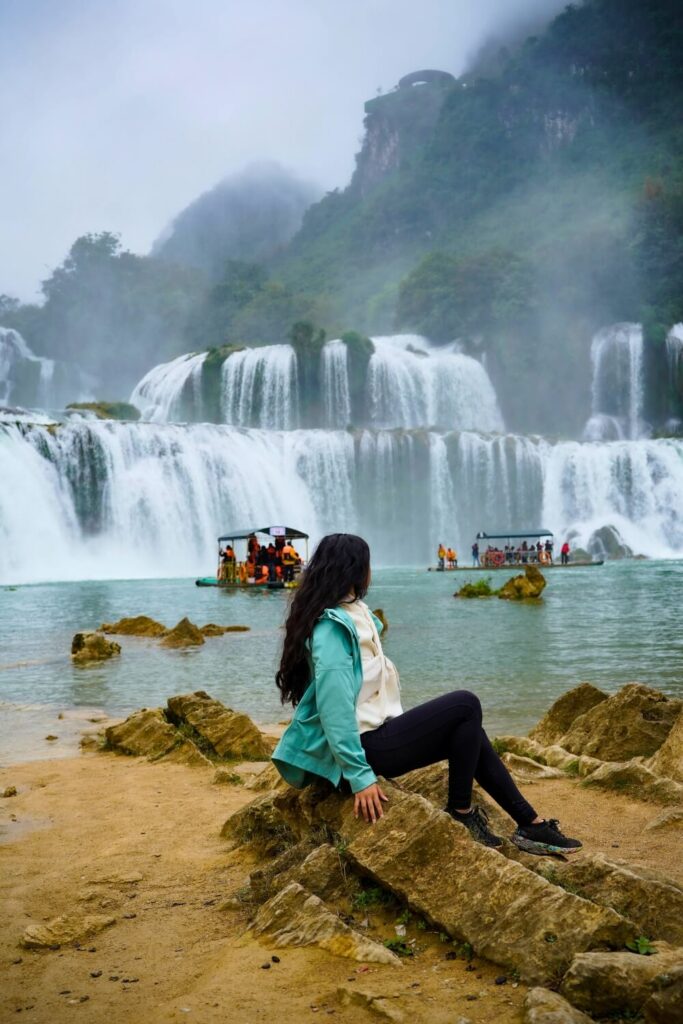
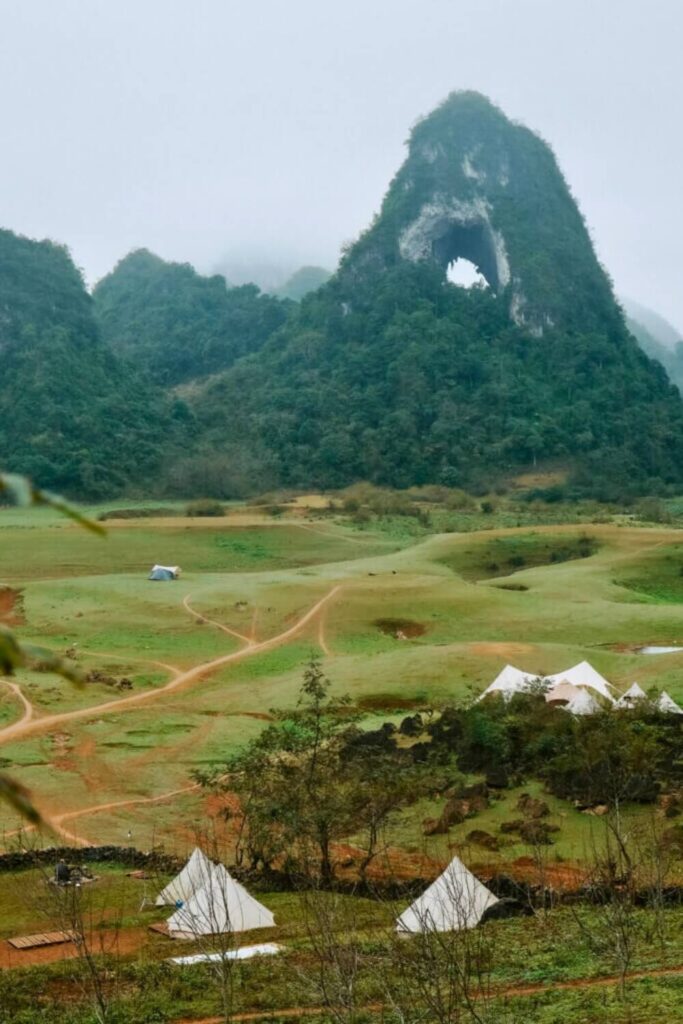
2. Ninh Binh Province
Locally known as “Ha Long Bay on Land”, Ninh Binh is a place famous for its magical riverine landscape.
Besides that, its dramatic limestone cliffs and lush rice paddies make it a dream come true for your travel photography.
You can plan a quick day trip from Hanoi, as it’s only an hour and a half’s drive from the capital city.
Once there, brace yourself for a high density of natural and cultural attractions.
These include the Hoa Lư Ancient Capital, dating back to the 10th century, filled with temples, fortress ruins, and other historic monuments.
Climb the 500 steps up a steep mountainside to Hang Múa (Mua Caves) for stunning sunset views.
Then, don’t forget to hike through one of the first national parks in Vietnam, Cúc Phương National Park, known for its rich biodiversity and wildlife spotting.
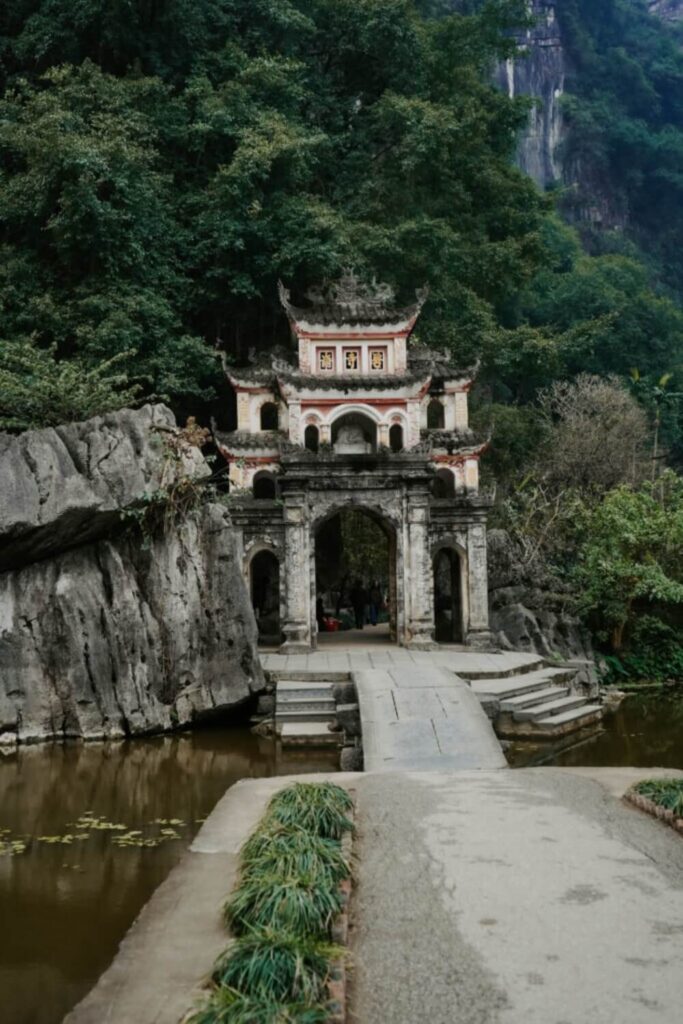
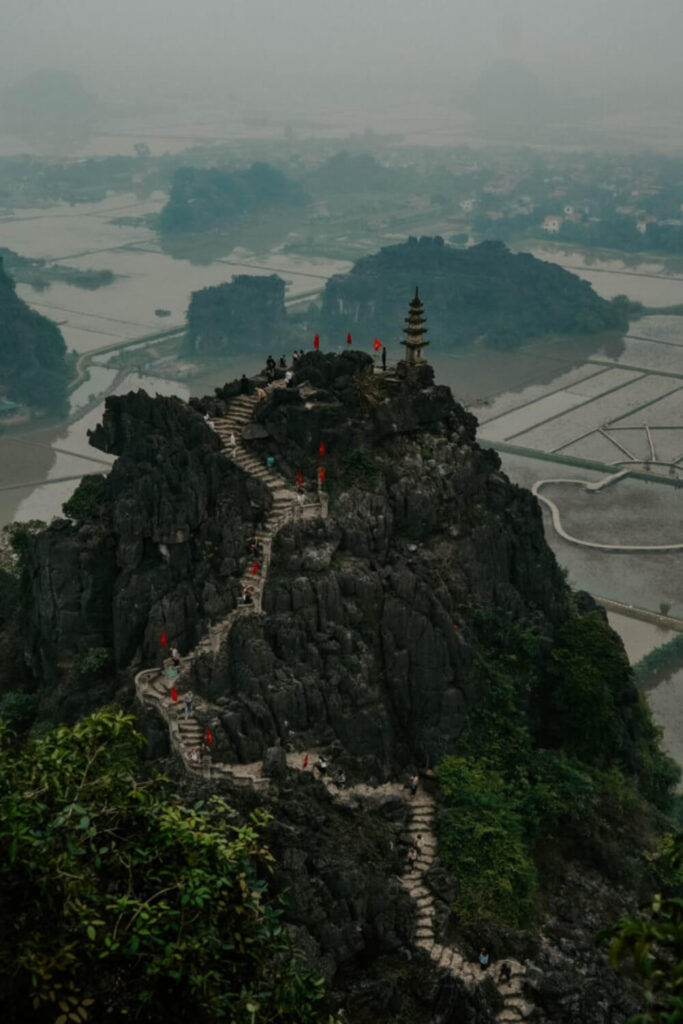
3. Hanoi
Hanoi city is no stranger to the travel scene, as you’d expect from the capital of Vietnam.
This is where you’ll experience top-tier sightseeing as Hanoi brims with centuries-old architecture, colorful cultures, and legendary street food.
Wandering the old, narrow streets of Hanoi Old Quarter should be the first thing on your agenda when landing in the city.
It will be an exciting introduction to the Vietnamese way of life (in the city, at least), with ancient shops, a lively night market, and street food vendors filling the air with pleasant smells.
Then, Hanoi is home to the iconic Temple of Literature, a must-see attraction for anyone who appreciates history.
Built in 1070 by Emperor Ly Thanh Tong, this Confucian temple has manicured lawns, ornate altars, shrines, and an imposing front gate you simply have to photograph.
Water puppet shows are also very popular in Hanoi and present a lovely opportunity to witness Vietnamese art and storytelling.
Lastly, you can’t miss the iconic and bustling Train Street, filled with street art and vendors, people often pair this with a food tour.
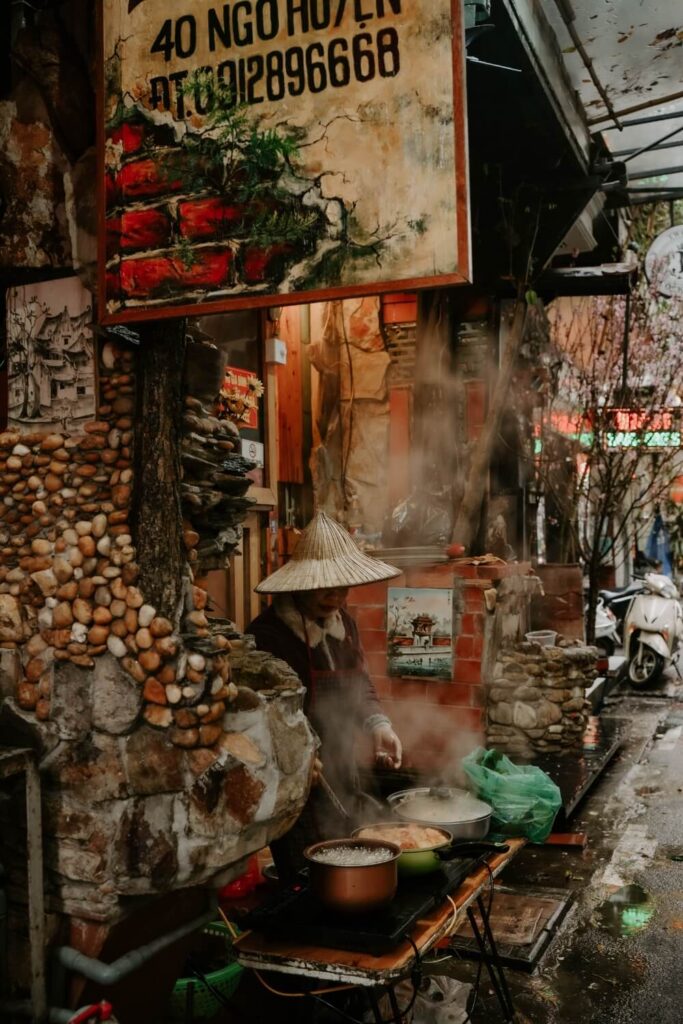
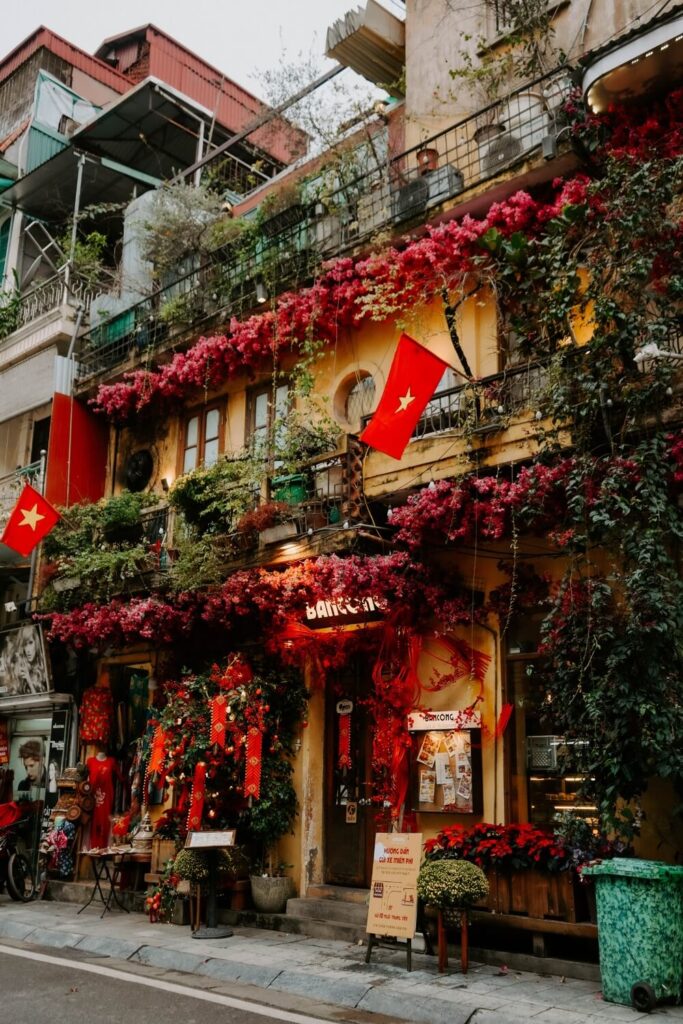
4. Ha Long Bay
Ha Long Bay offers the complete opposite of the cities mentioned so far.
Get ready to fully immerse yourself in nature as this coastal gem brings cave explorations, kayaking through hidden lagoons, and other adventures to the forefront.
This UNESCO-listed site consists of over a thousand small islands and islets formed from limestone mountains that jut out from emerald waters.
These waters are filled with life, from colorful rainbows of fish to seals and dolphins.
You can reach the bay by taking a flight to Hanoi and then taking a 2.5-hour bus drive from Noi Bai Airport to Halong.
Keep in mind that it’s not recommended to swim just anywhere in Ha Long Bay, so be sure to ask your tour guide, or the bay’s management board will announce safe swimming spots.

5. Sapa
Picturesque and serene as they come, Sapa, or Sa Pa, is a quaint town in the foothills of the Hoàng Liên Son Mountains.
Overlooking the terraced rice fields of the Muong Hoa Valley and surrounded by green peaks, waterfalls, and fairytale villages, it’s truly a place you have to see to believe.
With its mountainous terrain, it’s no surprise then that Sa Pa has become a hotspot for trekking. Trek your way through the rice fields and villages, which can be done overnight, too, before unwinding in a mountaintop lodge, such as Ville De Mont Mountain Resort.
There’s also an opportunity to see Sa Pa from a bird’s eye view by riding the Fansipan Cable Car.
Sa Pa Lake is an attraction in itself, but it also provides a footpath with lively cafes and splendid views around its rim.
The best way to travel to Sa Pa from Hanoi is via an affordable overnight bus ride offered by Sapa Express.
6. Hà Giang
No Northern Vietnamese guide is complete without the mention of Hà Giang.
This small city is located on the banks of the Lô River and is often described as one of the most special places to go to in Vietnam.
Hà Giang and Sapa are actually very similar in terms of appearance and atmosphere.
While the latter is all about rice terraces and trekking, the former offers epic mountain views and some of the best scenic drives.
One of these must-do drives is the Hà Giang Loop, a steep road that quickly rises above the tree line, revealing jaw-dropping views at every turn.
The Hà Giang Loop can be done in a three or four-day tour with multiple stops along the way, including hidden waterfalls, caves, and viewpoints.
Ma Pi Leng Pass is another stellar option for sightseeing, as you can hike or motorbike to several local ethnic communities to experience the rich cultural heritage.
Dong Van Karst Plateau Geopark in Ha Giang Province is the northernmost part of Vietnam, bordering China. This UNESCO Global Geopark is home to unique limestone landscapes and more than 17 different ethnic minority groups.
Because Hà Giang is so remote, it’s best to book a bus from Hanoi to make the six-hour trip.
7. Bac Ha
The Bac Ha district is just another peaceful destination to quietly slip away to.
Enjoy the rural, laid-back lifestyle as you explore the dramatic landscapes and colorful hill tribes. You can take either a bus or train from Hanoi to Bac Ha, both just under seven hours.
If time is not on your side, you can rent a car and make the journey in less than four hours.
Bac Ha is one of those hidden gems, untouched by tourist crowds, so you’ll experience North Vietnam and its people at its most authentic.
Though there are many points of interest, this rural district is mostly known for its flea and street markets.
Bac Ha Market is undoubtedly one of the best ethnic markets in Southeast Asia. It allows you to freely mingle with the locals in their traditional wear, sample exotic dishes, and stock up on keepsakes.
Head over to the Thác Tiên scenic point, where you’ll be met with a tall, cascading waterfall.
For a dose of history, visit the opulent Hoang A Tuong Palace, a landmark that blends Eastern and Western styles dating back to the twentieth century.
8. Mai Chau
The final pick for this list is another charming district that many travelers criminally overlook.
That’s not a bad thing, though, as the calm atmosphere enhances the sense of rural life unique to this district.
Like Bac Ha, Mai Chau offers a more authentic experience of Vietnam, with plenty of natural beauty, verdant rice terraces, and diverse ethnic minorities.
This post-card-worthy region is best explored on foot or by bike, as its mountainous conditions provide endless trekking trails.
The distance between Hanoi and Mai Chau is much shorter, allowing you to travel between the two in just three hours by bus.
One or two days is enough time to fully explore the region if you’re running on a tight schedule.
Mai Chau may be peaceful, but it’s also home to many fun activities and interesting sights.
Starting with Mo Luong Cave, a must-explore beauty with an underground river, stalactites, and stalagmites.
If you want more nature, Chieu Cave and Go Lao Waterfall are just as impressive, while kayaking on the Hòa Bình Reservoir will test your stamina.
Then, for a taste of local culture, visit Pa Co Night Market for all types of unique treats and souvenirs. Lac Village is your go-to spot for gifts, food, and traditional clothing.
Northern Vietnam, Places to Visit: FAQs
Want to know more about Northern Vietnam before you visit? These quick answers to FAQ’s have you covered.
1. What Are the Best Things to Do in Northern Vietnam?
This depends entirely on your personal preferences. That said, you can’t miss out on the following activities: trekking the Hà Giang Loop, admiring Ban Gioc Waterfalls, and visiting Sa Pa and Ha Long Bay.
2. What Is the Best Way to Get Around Northern Vietnam?
Depending on where you’d like to visit, you’d likely get around using a combination of public transport. These range from overnight trains, buses, and private car transfers when going off the beaten path.
3. Which Part of Vietnam Is Best to Visit, North or South?
Northern Vietnam takes first place for its colorful and rich culture, history, and scenery. Then, the south is more suited for beach hopping and modern city life.
